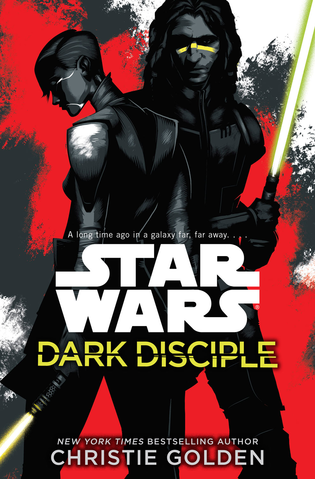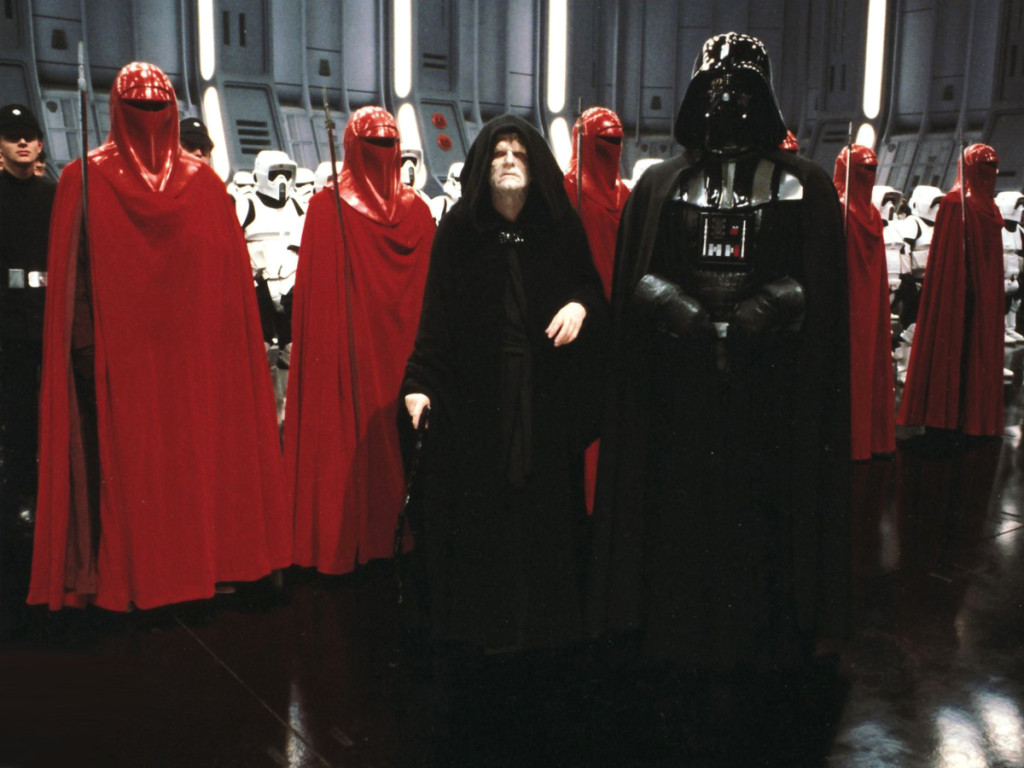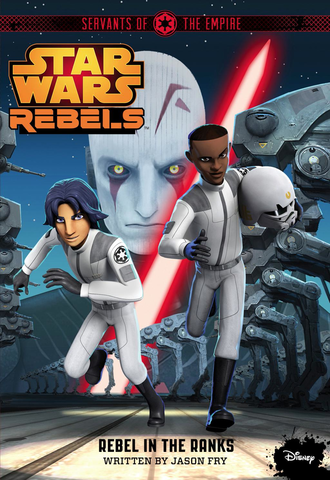![51gF3dYpeTL._SX329_BO1,204,203,200_[1]](http://eleven-thirtyeight.com/wp-content/uploads/2015/09/51gF3dYpeTL._SX329_BO1204203200_1.jpg) As it happens, we were long planning a series of pieces called “Gray Matters” on how the various sides in Star Wars are and ought to be portrayed in the new canon. Our first piece was either going to be about the Empire or the Rebellion, where we would discuss the comparative pitfalls of black and white morality vs moral grays and try to come up with a solution that was morally nuanced but still fit the morality tale that is the Star Wars saga. And lo – here came a novel called Lost Stars by Claudia Gray, featuring of all things a narrative about just how decent people serve as Imperial Loyalists. The coincidence (and the now doubly punny title) was impossible to ignore, so here we are!
As it happens, we were long planning a series of pieces called “Gray Matters” on how the various sides in Star Wars are and ought to be portrayed in the new canon. Our first piece was either going to be about the Empire or the Rebellion, where we would discuss the comparative pitfalls of black and white morality vs moral grays and try to come up with a solution that was morally nuanced but still fit the morality tale that is the Star Wars saga. And lo – here came a novel called Lost Stars by Claudia Gray, featuring of all things a narrative about just how decent people serve as Imperial Loyalists. The coincidence (and the now doubly punny title) was impossible to ignore, so here we are!
We’ll try to avoid spoiling the book, especially as we hope this article convinces some folks to read Lost Stars! Don’t let the YA label dissuade you: YA novels are emphatically not less mature than adult novels (at least not simply because they’re YA!). This is the first Star Wars YA book, as the books EU fans typically call “YA” are middle grade books, which also should not be judged on their age rating because the six canon middle grade books out as of last week are amazing — particularly Servants of the Empire — and this week’s brilliant ANH adaptation brings that to seven!)
Lost Stars is the closest we’ve ever really gotten to an Imperial POV novel – the title characters basically start up as Imperial subjects and join the Imperial service. One of them – Thane Kyrell – drifts away from the Empire while the other – Ciena Ree – stays loyal. Gray crafted a unique and interesting societal background for them on their Rim world of Jelucan which explains their different world views and consequently divergent takes on Imperial policy. These differences are not unique to Thane and Ciena – a good amount of the cast is in the service of the Emperor, and they are all very different people with different motivations and ethical codes. This is what makes the novel a perfect case study: more than just portraying Imperial Loyalists with authenticity or even sympathy, Gray shows the wide variety of people who serve the Empire and how their service to the Empire changes them in turn.
The thing about the Galactic Empire is that it is not a monolith. It is complex and nuanced. It is, obviously, ruled by evil Sith Lords. It is supported by fascists in COMPNOR and ISB. It is driven by raw material exploitation and upheld by stormtroopers and a military that can range from the ruthless but honorable to the downright brutal. So at the first instance, let’s not pretend the Empire is daisies and roses (those of you familiar with our “Imperial Colbert” routine may be surprised by this turn in the discussion, but we don’t playact in our ETE articles). Beyond that though – the Empire is a galactic government, and one that is accepted by the majority of the galactic populace. This is either through an ignorance of its evils, an unwillingness to do anything about it, or acceptance of it. Imperials of the Core Worlds live cushy, sheltered lives – the cries of the Outer Rim go unheard. As seen in Edge of the Galaxy, Core World Imperials may well assume that the brutalities going on in the Rim are just part of the barbarity of the Rim – conducted by lawless Rimward officers to boot!
As we learn in Lost Stars, however, the distinction is not between active agent of Imperial oppression and passive beneficiary. The lines blur and cross. This makes the Empire interesting. George Lucas always said that the Empire was a seductive form of evil: it would not be so threatening if it were the repository of all the bad things, because it’s evil that persuades people to serve it that is the most threatening.
![Servants_of_the_Empire_Imperial_Justice[1]](http://eleven-thirtyeight.com/wp-content/uploads/2015/07/Servants_of_the_Empire_Imperial_Justice1-705x1024.png) In what’s becoming a regular feature on this site, we’re publishing yet another rave review of a Jason Fry novel. It’s not our fault – Jason has a tendency to release high-quality novels at an impressive pace, so blame him for the lack of variety. Although that’s pretty unfair, because the best thing about Jason’s novels is that each of them are good for different reasons and allow us to focus on different aspects of the Star Wars universe. His
In what’s becoming a regular feature on this site, we’re publishing yet another rave review of a Jason Fry novel. It’s not our fault – Jason has a tendency to release high-quality novels at an impressive pace, so blame him for the lack of variety. Although that’s pretty unfair, because the best thing about Jason’s novels is that each of them are good for different reasons and allow us to focus on different aspects of the Star Wars universe. His  The Clone Wars dominated the landscape of Star Wars media for a good ten years or so, from the release of Attack of the Clones onward. The once-mysterious conflict referred to by Obi-Wan was fleshed out to an almost absurd extent. Once the Disney era of Star Wars publishing began, though, that focus shifted back toward the original trilogy era, leaving fans used to the focus on the prequels feeling left out. Then Dark Disciple was announced, and the combination of author and subject matter made most fans throw up their hands in either jubilation or utter despair. Christie Golden’s only contributions to Star Wars before now were in the Fate of the Jedi series, which has a rather mixed reputation among many readers. Not having read them myself, I sought to go into this book with as open a mind toward Golden as possible, since I try not to assign blame to authors for elements in books that are, often, works by committee to some degree.
The Clone Wars dominated the landscape of Star Wars media for a good ten years or so, from the release of Attack of the Clones onward. The once-mysterious conflict referred to by Obi-Wan was fleshed out to an almost absurd extent. Once the Disney era of Star Wars publishing began, though, that focus shifted back toward the original trilogy era, leaving fans used to the focus on the prequels feeling left out. Then Dark Disciple was announced, and the combination of author and subject matter made most fans throw up their hands in either jubilation or utter despair. Christie Golden’s only contributions to Star Wars before now were in the Fate of the Jedi series, which has a rather mixed reputation among many readers. Not having read them myself, I sought to go into this book with as open a mind toward Golden as possible, since I try not to assign blame to authors for elements in books that are, often, works by committee to some degree.
 Jason Fry’s second entry in the Servants of the Empire young adult novel series takes place concurrently with the Rebels season one episode “Breaking Ranks” and his two books arguably do more to develop Lothal as an interesting place than an entire season of the still-excellent show has managed to do. If you’re still worried about the “young adult” part of that sentence, read
Jason Fry’s second entry in the Servants of the Empire young adult novel series takes place concurrently with the Rebels season one episode “Breaking Ranks” and his two books arguably do more to develop Lothal as an interesting place than an entire season of the still-excellent show has managed to do. If you’re still worried about the “young adult” part of that sentence, read 